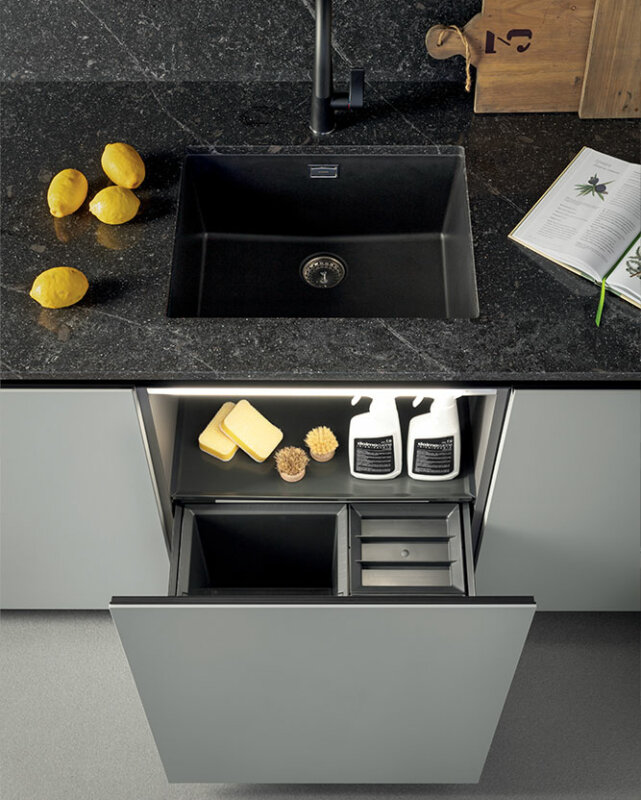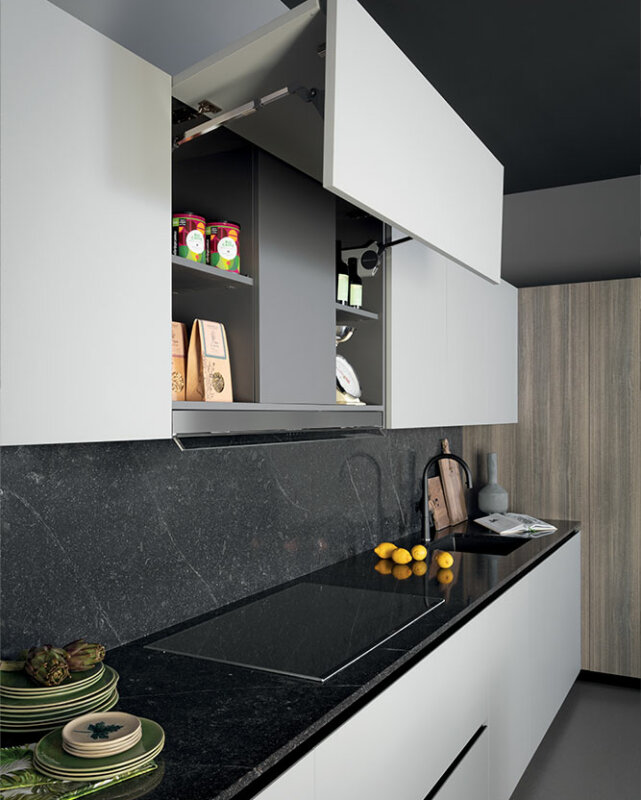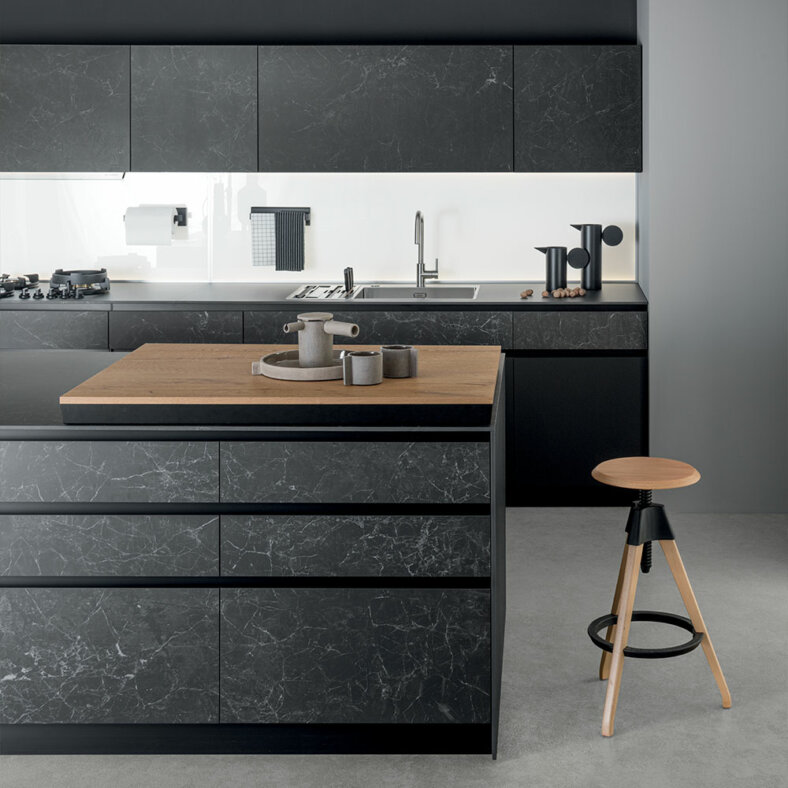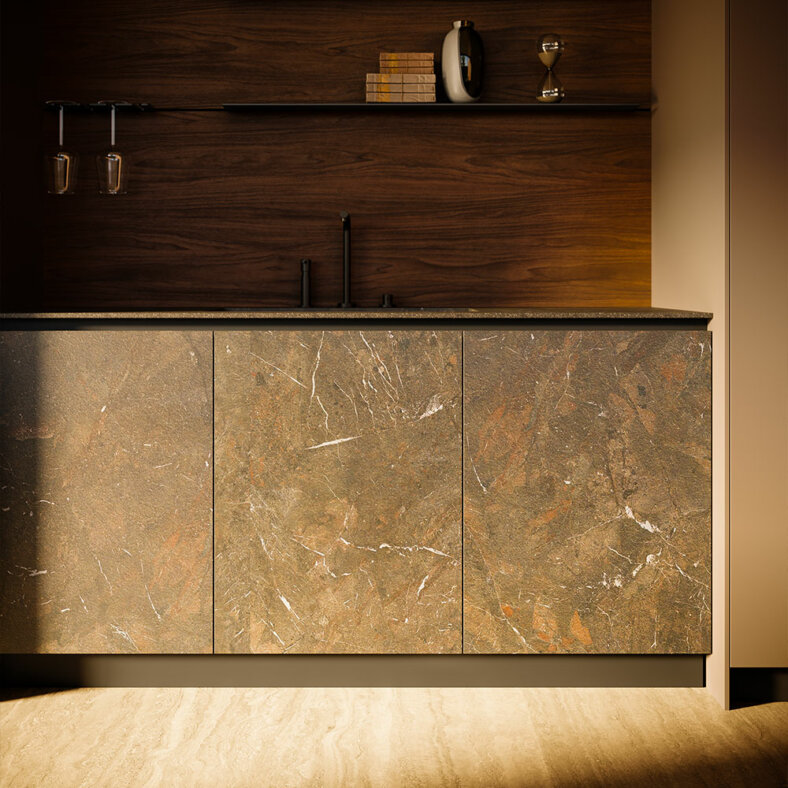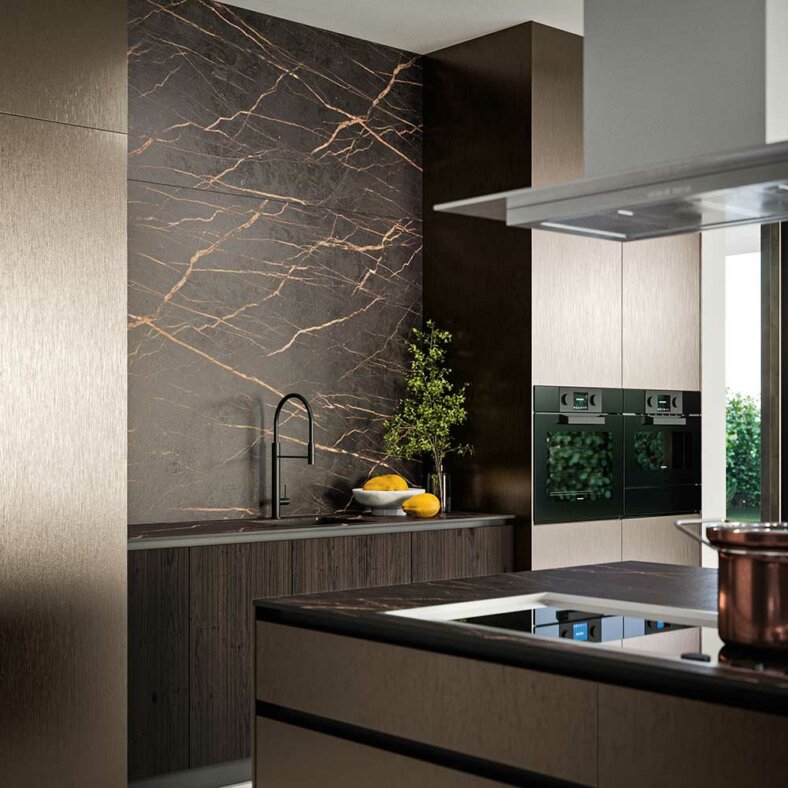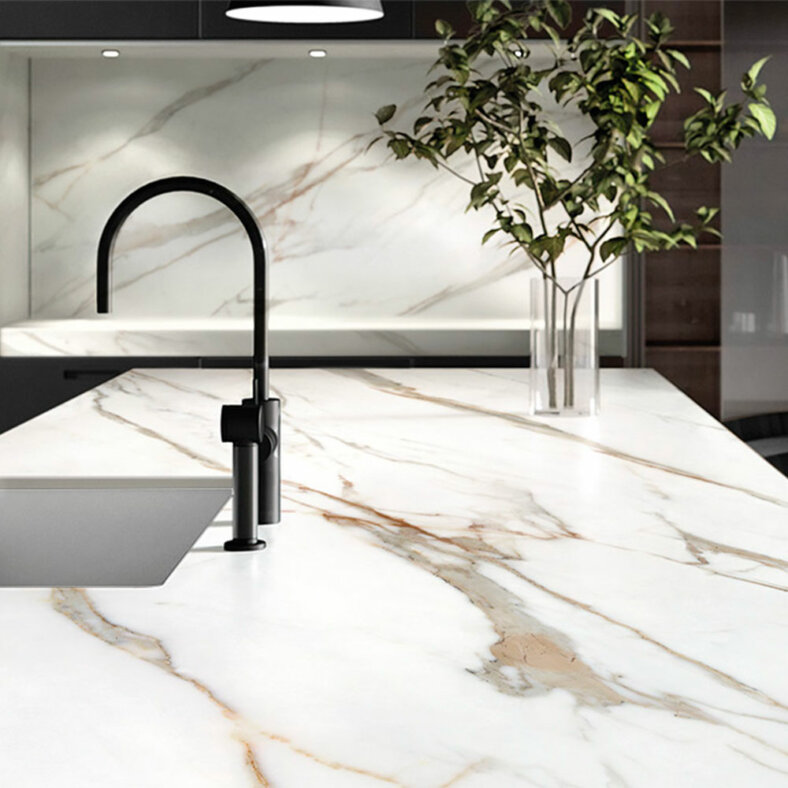Suggestions and guides
Okite® and Silestone®
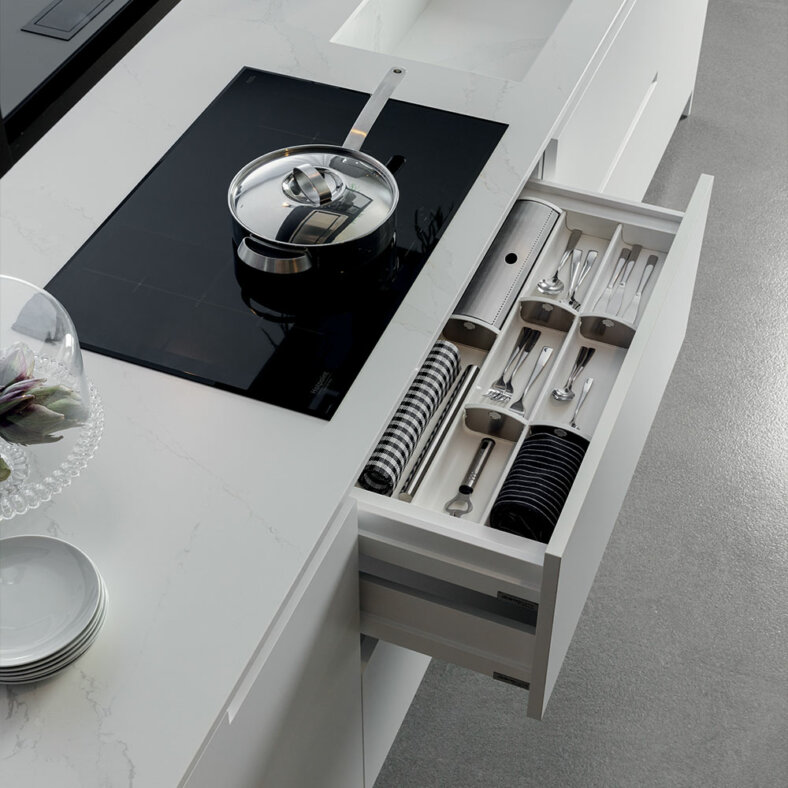
Resistance and variety of quartz
Quartz and its compounds materials: what are they?
Quartz is a common mineral in nature, the constituent element of many rocks and available in countless varieties. Highly durable and chemically stable it cannot be attacked by strong acids, with the exception of hydrofluoric acid.
In order to be worked in sheets, as the furnishing sector requires, quartz is not used in its pure form. It becomes an innovative its compounds material, formed of 90% to 95% natural quartz dusts, thermosetting resins to solidify the mixture and natural pigments to obtain the required colours and particular aesthetic effects.
Characteristics of quartz
Engineered quartz sheets, such as Okite® and Silestone®, are an elegant choice in the kitchen. They offer a natural look, a vast range of colours and diverse chromatic effects.
Engineered quartz sheets are:
- hygienic
- extremely resistant to scratches, impacts and usury
- resistant to stains because they do not absorb water, detergents, oil, coffee, wine, soft drinks and other everyday kitchen products
- very resistant to heat
- resistant to a high number of chemical agents
Additionally, worktops in Silestone® are made using the innovative Hybriq+® technology that offers particular protection for those involved in its fabrication by drastically reducing the presence of crystalline silica in favour of the health of those involved in this process.
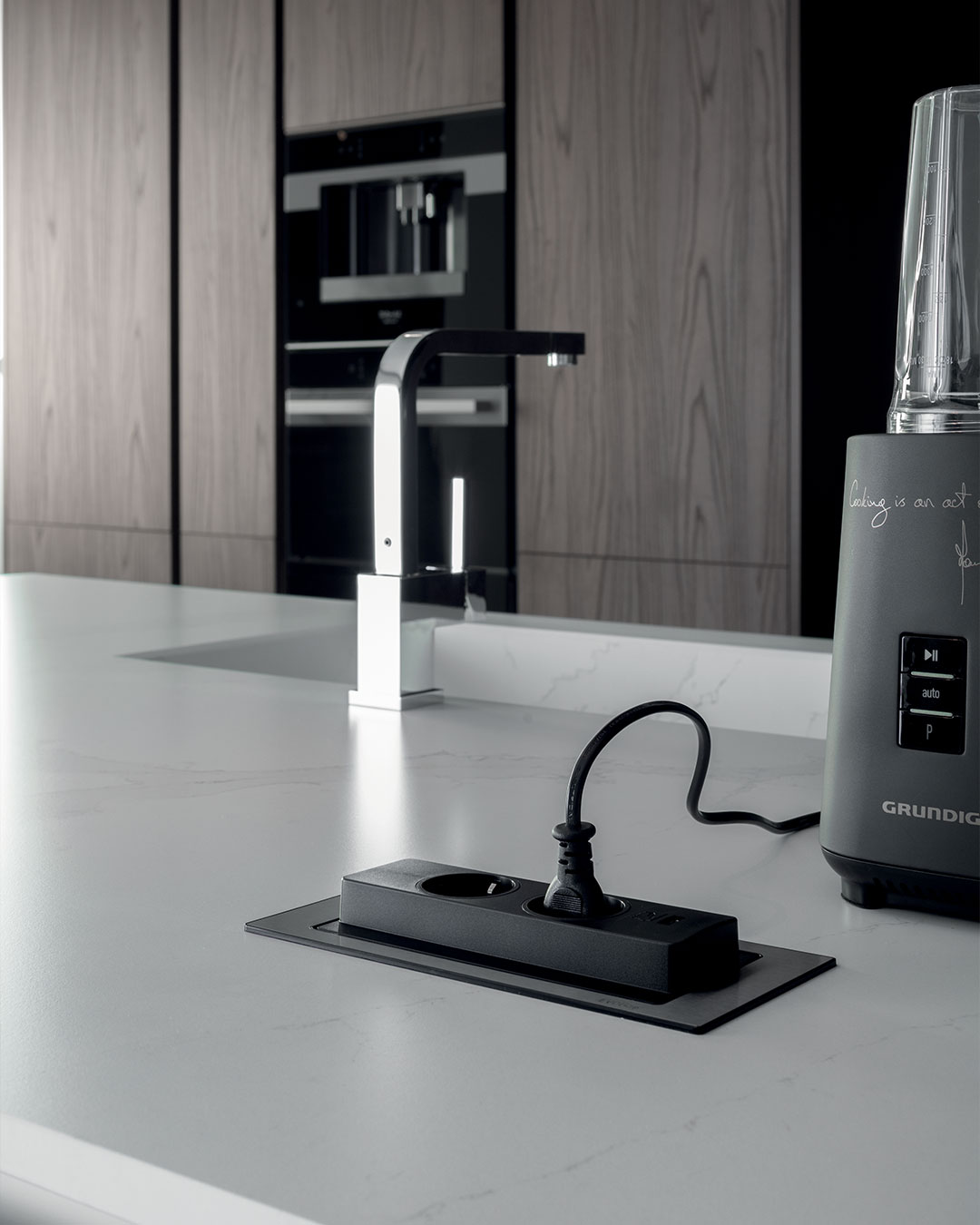
Quartz work tops
Work tops in Okite® and Silestone® perfectly simulate the elegance of natural quartz and stone while guaranteeing increased technical performance. They are available in numerous colours and various thicknesses. Exposed edges are honed and polished. Tops are often combined, in particular in the cooking area, with panels of the same material to create water-resistant, hygienic and easy to clean splashes and splashbacks.
How to clean Okite® and Silestone®
Eventual spills of liquids or other substances should be quickly absorbed using kitchen paper and successively washed with a soft damp cloth, warm water and liquid detergent. To remove encrustations, sticky substances, fat stains, grease or water based paints, gently scrape the residue with a dull plastic spatula and a non-abrasive sponge with a creamy detergent. Rinse generously with warm water and dry the surface with a clean cloth.
For work tops or other elements in Okite® and Silestone® it is always a good idea to use:
- trivets under hot objects such as pots, coffee makers, irons, etc.
- insulation for countertop ovens or other small appliances to keep the surface from overheating as this can lead to cracking or colour alterations over time
- cutting boards for the preparation of foods to avoid micro-scratches from knives, which tend to collect germs and dirt often invisible to the human eye
Avoid the use of:
- bleach
- alkaline products
- paint solvents
- caustic soda
- hydrofluoric acid
